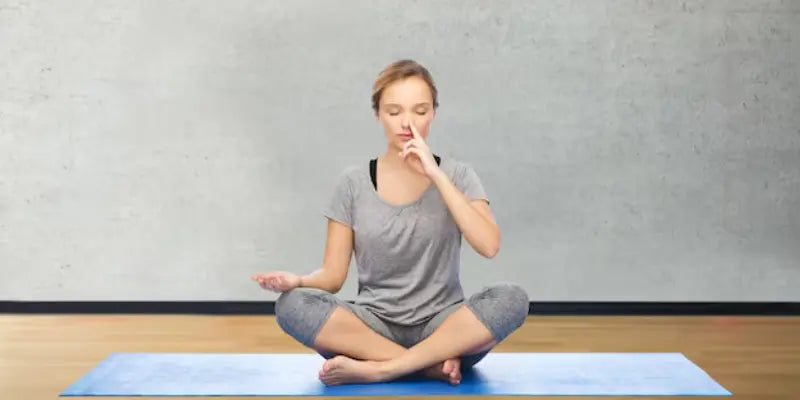
Box Breathing Technique for Better Sleep: A Simple Guide
If you find it difficult to sleep at night and are looking for ways to get better sleep at night, this technique can work wonders for you. This blog will walk you through what box breathing is, how it works, and how you can incorporate it into your nightly routine for better sleep.
What is Box Breathing?
Box breathing, also known as square breathing, is a breathing exercise that involves four basic steps, each lasting 4 seconds:
- Breathing in
- Holding the breath
- Breathing out
- Holding the breath
This technique is named "box breathing" because each phase of the breath cycle is of equal duration, forming a square or box pattern. It is a powerful, yet simple method used by everyone, from Navy SEALs to athletes, to reduce stress and improve focus.
How Does Box Breathing Work?
Box breathing works by activating the parasympathetic nervous system, which helps to calm the body and mind. When we are stressed or anxious, our body goes into a fight-or-flight mode, driven by the sympathetic nervous system. By practicing box breathing, we can shift our body back into a state of rest and relaxation. This is particularly useful before bedtime, as it prepares the body for sleep.
Benefits of Box Breathing
- Reduces Stress and Anxiety: Box breathing helps lower cortisol levels, the hormone responsible for stress. This creates a sense of calm and helps reduce anxiety.
- Improves Focus and Clarity: Regular practice of box breathing can improve concentration and mental clarity by increasing oxygen flow to the brain.
- Promotes Better Sleep: By calming the nervous system, box breathing makes it easier to fall asleep and stay asleep.
- Enhances Lung Capacity: This technique encourages deep breathing, which can improve lung capacity and overall respiratory health.
How to Practice Box Breathing
Follow these simple steps to practice box breathing. Find a quiet, comfortable place to sit or lie down where you won’t be disturbed.
- Get Comfortable: Sit in a comfortable chair with your back straight and feet flat on the floor, or lie down in a comfortable position. Place your hands on your lap or by your sides.
- Close Your Eyes: Close your eyes to help focus on your breathing and reduce external distractions.
- Inhale: Breathe in slowly and deeply through your nose for a count of four. Feel your lungs fill with air from your abdomen to your chest.
- Hold Your Breath: Hold your breath for a count of four. Try to keep your body relaxed and avoid tensing up.
- Exhale: Slowly exhale through your mouth for a count of four. Imagine you are blowing out a candle gently and steadily.
- Hold Your Breath Again: Hold your breath for another count of four before beginning the next inhale.
- Repeat: Repeat this cycle for at least four to five minutes. You can gradually increase the duration as you become more comfortable with the technique.
When to Practice Box Breathing
Box breathing can be done anytime you need to relax, but it is especially beneficial before bedtime. Here’s how you can incorporate it into your nightly routine:
- Wind Down: Try to create bedtime routine and a good sleep environment for yourself Dim the lights, turn off electronic devices, and engage in relaxing activities.
- Set the Scene: Create a calm environment in your bedroom. Ensure the room is cool, dark, and quiet.
- Practice Box Breathing: Sit or lie down comfortably and begin your box breathing practice. Focus solely on your breath and let go of any thoughts about your day.
- Combine with a Sleep Routine: After your box breathing session, continue with your usual bedtime routine, such as reading a book or listening to soft music.
Conclusion
Box breathing is a simple technique that can help you sleep better at night and also help in reducing stress and make you feel more relaxed and calm. You can add this meditation practice to your night time routine, this can help you prepare your body and mind for a restful night’s sleep. Always remember to be consistent to see the results and be mindful while doing any meditation practice. Give it a try yourself and see how it can help you get quality sleep and also benefits your overall wellbeing.
If you're feeling stress, stiffness, head or neck pain, or general discomfort, it may be time to replace your standard pillow with a memory foam pillow designed to support the cervical area.








